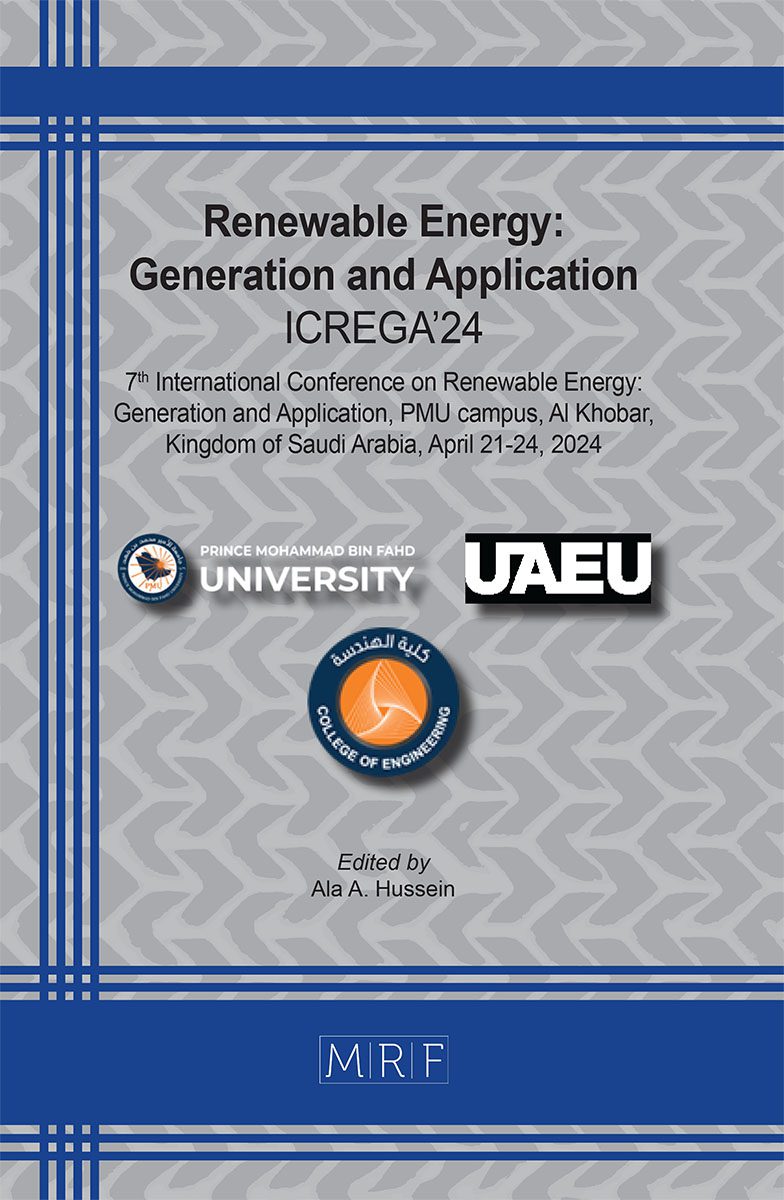–
Vibration analysis of 3D printed PLA beam with honeycomb cell structure for renewable energy applications and sustainable solutions
Kubilay ASLANTAS, Ekrem ÖZKAYA, Waleed AHMED
download PDFAbstract. Research shows a lack of vibration analyses of structures produced by 3D printing. This study, therefore, investigates the vibration behavior of honeycomb structures made of polylactic acid (PLA) using the additive manufacturing process fused deposition modeling (FDM) in a beam element. Based on an experimental modal analysis and the determination of the damping rate, a FEM reference simulation model is created, and the results are validated with the data from the experiment. The original honeycomb structure was numerically varied in its density, i.e., in the thickness (t) of the cell wall, in the length (L) of the regular hexagons, and in its degree of filling. The results showed that the density of the honeycombs at a filling level of 19% has a marginal influence on the vibration behavior. The vibration behavior was reduced only when the filling level was increased to 30%. This study has implications for many areas of research in which vibrations play a significant role in technical applications. These findings highlight the potential for integrating renewable energy applications with sustainable solutions, emphasizing the importance of vibration dynamics in advancing environmentally friendly technologies.
Keywords
Additive Manufacturing, Vibration Analysis, Finite Element Method
Published online 7/15/2024, 8 pages
Copyright © 2024 by the author(s)
Published under license by Materials Research Forum LLC., Millersville PA, USA
Citation: Kubilay ASLANTAS, Ekrem ÖZKAYA, Waleed AHMED, Vibration analysis of 3D printed PLA beam with honeycomb cell structure for renewable energy applications and sustainable solutions, Materials Research Proceedings, Vol. 43, pp 164-171, 2024
DOI: https://doi.org/10.21741/9781644903216-22
The article was published as article 22 of the book Renewable Energy: Generation and Application
![]() Content from this work may be used under the terms of the Creative Commons Attribution 3.0 license. Any further distribution of this work must maintain attribution to the author(s) and the title of the work, journal citation and DOI.
Content from this work may be used under the terms of the Creative Commons Attribution 3.0 license. Any further distribution of this work must maintain attribution to the author(s) and the title of the work, journal citation and DOI.
References
[1] A. M. T. Syed, P. K. Elias, B. Amit, B. Susmita, O. Lisa, & C. Charitidis, “Additive manufacturing: scientific and technological challenges, market uptake and opportunities,” Materials today, Vol. 1, pp. 1-16, 2017
[2] Shulman, H.; Spradling, D.; and Hoag, C.: Introduction to additive manufacturing, Ceram. Indus. 162:15-21, 2012.
[3] N. Shahrubudin, T.C. Lee, R. Ramlan, An Overview on 3D Printing Technology: Technological, Materials, and Applications, Procedia Manufacturing, Volume 35, 2019, Pages 1286-1296. https://doi.org/10.1016/j.promfg.2019.06.089
[4] Ji-chi Zhang, Kuai He, Da-wei Zhang, Ji-dong Dong, Bing Li, Yi-jie Liu, Guo-lin Gao, Zai-xing Jiang, Three-dimensional printing of energetic materials: A review, Energetic Materials Frontiers, Volume 3, Issue 2, 2022, Pages 97-108,7. https://doi.org/10.1016/j.enmf.2022.04.001
[5] Anketa Jandyal, Ikshita Chaturvedi, Ishika Wazir, Ankush Raina, Mir Irfan Ul Haq, 3D printing – A review of processes, materials and applications in industry 4.0, Sustainable Operations and Computers, Volume 3, 2022, Pages 33-42. https://doi.org/10.1016/j.susoc.2021.09.004
[6] Jennifer Gonzalez Ausejo, Joanna Rydz, Marta Musioł, Wanda Sikorska, Henryk Janeczek, Michał Sobota, Jakub Włodarczyk, Urszula Szeluga, Anna Hercog, Marek Kowalczuk, Three-dimensional printing of PLA and PLA/PHA dumbbell-shaped specimens of crisscross and transverse patterns as promising materials in emerging application areas: Prediction study, Polymer Degradation and Stability, Volume 156, 2018, Pages 100-110. https://doi.org/10.1016/j.polymdegradstab.2018.08.008
[7] Iftekar, S.F.; Aabid, A.; Amir, A.; Baig, M. Advancements and Limitations in 3D Printing Materials and Technologies: A Critical Review. Polymers 2023, 15, 2519. https://doi.org/10.3390/polym15112519
[8] Rasal RM, Janorkar AV, Hirt DE. Poly(lactic acid) modifications. Prog Polym Sci 2010;35:338-356. https://doi.org/10.1016/j.progpolymsci.2009.12.003
[9] Arrieta MP, López J, Hernández A, Rayón E. Ternary PLA-PHB-limonene blends intended for biodegradable food packaging applications. Eur Polym J 2014;50:255-270. https://doi.org/10.1016/j.eurpolymj.2013.11.009
[10] Hossein Mohammadi, Zaini Ahmad, Michal Petrů, Saiful Amri Mazlan, Mohd Aidy Faizal Johari, Hossein Hatami, Seyed Saeid Rahimian Koloor, An insight from nature: honeycomb pattern in advanced structural design for impact energy absorption, Journal of Materials Research and Technology, Volume 22, 2023, Pages 2862-2887. https://doi.org/10.1016/j.jmrt.2022.12.063
[11] Zippo, A.; Iarriccio, G.; Pellicano, F.; Shmatko, T. Vibrations of Plates with Complex Shape: Experimental Modal Analysis, Finite Element Method, and R-Functions Method. Shock. Vib. 2020, 8882867. https://doi.org/10.1155/2020/8882867
[12] Park, K.-M.; Min, K.-S.; Roh, Y.-S. Design Optimization of Lattice Structures under Compression: Study of Unit Cell Types and Cell Arrangements. Materials 2022, 15, 97. https://doi.org/10.3390/ma15010097
[13] ANSYS Inc. (2022). ANSYS Software. Retrieved from https://www.ansys.com












